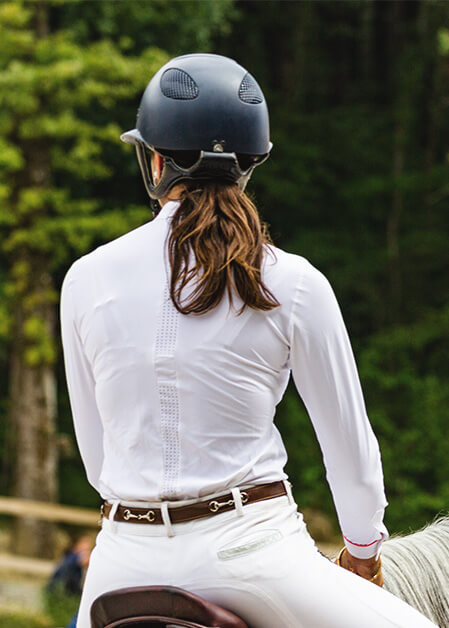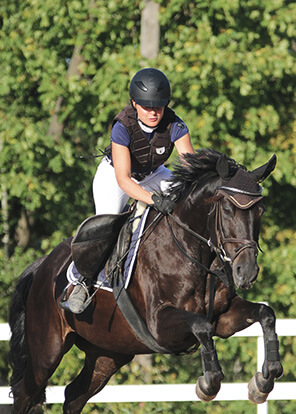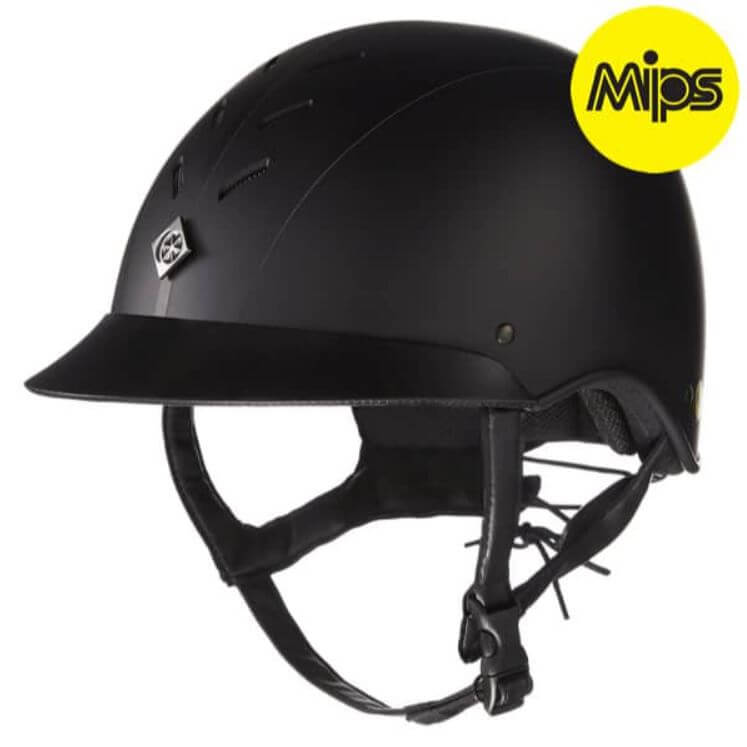
What You Should Know About Riding Helmets
Today’s riding helmets are sleek and lightweight, marvels of modern technology. If you’re going riding today, most places require you to wear a helmet, but really, It’s just a smart choice to make, anyway. Modern riding helmets have saved many lives.
It’s taken a while for us to get to this point. Even if it doesn’t seem like it, people before wanted to protect their heads too, they just didn’t have the technology yet. Helmets have evolved from being cloth hats, to harder cloth hats, gradually getting stiffer under they’ve reached their current forms. It’s been quite a journey for them.
Read on to learn about the history of riding helmets, plus learn what you need to know about purchasing your own riding helmet.
Fox Hunting Roots
Like many aspects of riding, the original riding hats were out in the hunt field. Originally men and women wore derbies, with men wearing top hats on formal occasions. It was primarily a fashion statement for the foxhunters.
But there was a general desire for riding to be safer, and fox hunters begin wearing the hunt cap. While it offered some protection from the elements, it was hardly crash-worthy. But still, it was recognized that people did want to protect their heads somewhat. The original hunt cap was essentially a shell of stiffened fabric, somewhat harder than the usual hats wore at the time.

The Skull Cap
The 1930s marked a turning point with the development of the “skull cap,” a lightweight helmet made of leather, and eventually plastic. Jockeys were the first to embrace it, and it was mandated by racing associations in the 1950s.
The skull cap is currently popular with eventers in the cross country phase. It was once safer for riders, as there’s no brim to catch on an obstacle, but modern riding helmets have been designed with brims that will break off. But even so, some simply prefer the style of the skull cap.
High-Tech Helmets
Charles Owen, a pioneer in equestrian safety, revolutionized the game in the 1980s with the first dual-standard helmet. This groundbreaking design met both ASTM and SEI standards, offering unparalleled protection for all types of riding.
Today’s helmets are marvels of modern technology. Lightweight materials like ABS and polycarbonate shells absorb and distribute impact effectively. Ventilation systems keep riders cool, while adjustable harnesses ensure a snug fit. Most recently, advanced features like MIPS have been showing up in helmets.

MIPS
The term MIPS has been showing up in a lot of helmets recently. Curious what it means? It stands for Multi-Directional Impact Protection System, and it is a silent guardian of your head. It was actually invented in the 1990’s by a Swedish researcher and a neurosurgeon. It’s now used in a variety of helmets including cycling, motorcycle, and snow sports helmets.
MIPS is a low-friction layer inside the helmet. It’s essentially a thin, plastic liner that allows the outer shell to rotate slightly around your head upon impact. This seemingly small movement makes a big difference.
By absorbing and redirecting rotational forces, MIPS helps to:
- Reduce the risk of concussions
- Minimize the severity of brain injuries
- Protect against rotational neck injuries
Imagine a crash where your head hits the ground at an angle. Without MIPS, the entire force of the impact would be transmitted directly to your brain. But with MIPS, the outer shell takes the brunt of the blow, and the liner allows it to rotate slightly. This twisting motion disperses the energy throughout the helmet, reducing the amount of force that reaches your head.
MIPS is not just a fancy marketing gimmick. Although it isn’t the complete magical remedy to all head injuries, it’s a real, proven technology that has been shown to be effective in reducing head injuries. Studies have found that helmets with MIPS can reduce the risk of concussions by up to 40%. That’s a significant number, and it could mean the difference between a minor bump on the head and a life-altering injury.
When you’re purchasing a helmet, look for the distinctive yellow MIPS logo inside the helmet.
Finding the Right Helmet
Finding the right helmet is more than just aesthetics, but I know that plays a big role for many of us. It’s nice to have an attractive helmet, especially if it makes you wear it every time. But before you go buying a really pretty, expensive helmet, know that they are supposed to be replaced every time you fall. If you think there might be some falls coming, (new rider, green horse, just really really clumsy) maybe get a cheaper schooling helmet. Regardless of falls, helmets should be replaced every five years due to degradation of the materials. Check inside your helmet for the manufacturer date.
Other than that, here are some things to look for.
ASTM F1163 or EN 1384 certified
The ASTM F1163 is the American standard of helmet safety. Helmets undergo a series of tests including impact (drops from various heights and angles into an anvil), penetration (sharp objects are dropped on the helmet), and retention (straps and harnesses are tested to ensure the helmet would stay on in a fall).
If the helmet passes these tests, it has met the minimum requirements to protect your head.
The EN 1384 is the European equivalent, but with a crucial difference – their tests focus on slightly higher impact energies. This means the EN 1384 might have slightly more protection.
Both are acceptable standards worldwide, but you should pay attention to the rules of whatever you compete in to make sure your helmet is compliant.
Correct Fit
The best way to ensure your helmet fits is to get one from a tack store where you can try it on. Different helmets fit differently, too. For example, Charles Owens are designed to fit snug at first, and then loosen slightly with time.
You can also measure around the crown of your head, Check your measurements to the brand’s size chart. Some brands have adjustable dials or padding to customize the fit.
When you try on the helmet, it should fit snug around your head, and not move if you shake your head around. If it’s too small, it’ll end up either resting on top of your head, or it’ll give you a headache, or both.
Find helmets that will protect that big beautiful brain of yours.
Horses can be dangerous, and I will take a stand here and say you should always wear your helmet while riding. I’ll give some leeway for very controlled environments like a photoshoot, but that’s the photographer part of me coming out.
Somehow, in these modern times, with so much information available, there are still people who refuse to wear a riding helmet. The reason is usually always that they don’t like the way it looks. Luckily for many of them, they have so far escaped serious injury, but I cannot understand why someone would want to play such a dangerous game each time they mount up. Horses can still act in unpredictable ways, and it only takes one time for your brain to be seriously messed up. Please protect that brain of yours, so you can ride for a lifetime.

